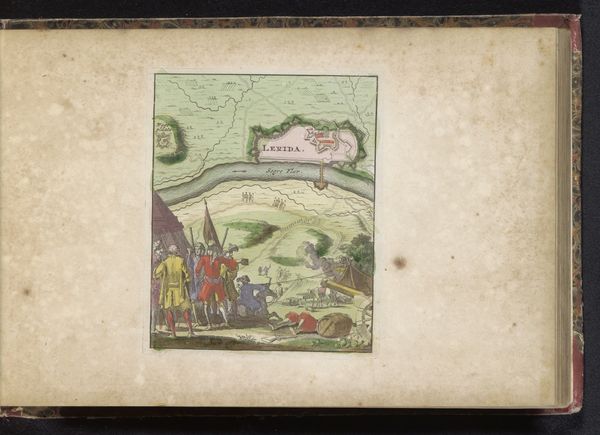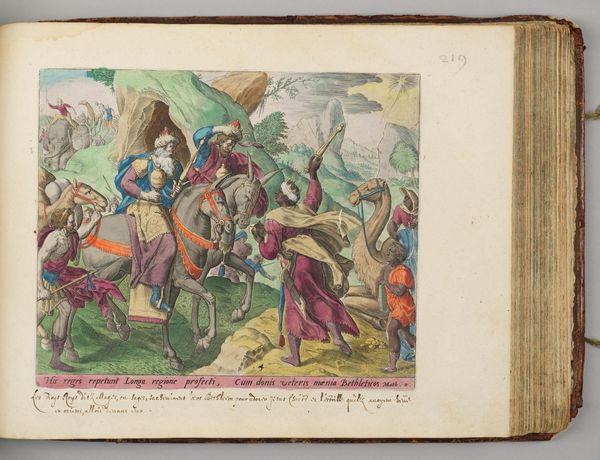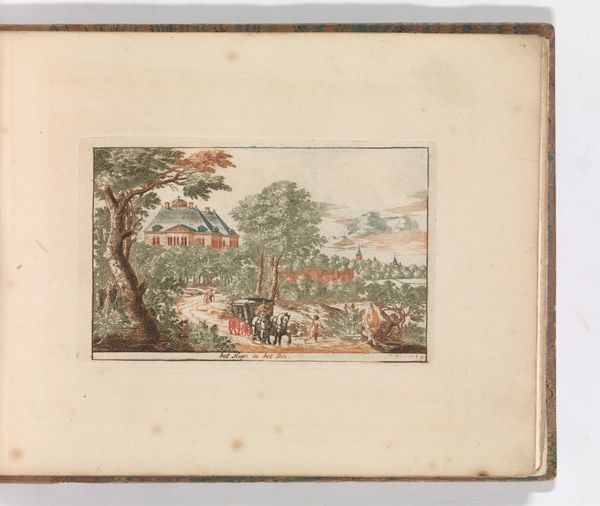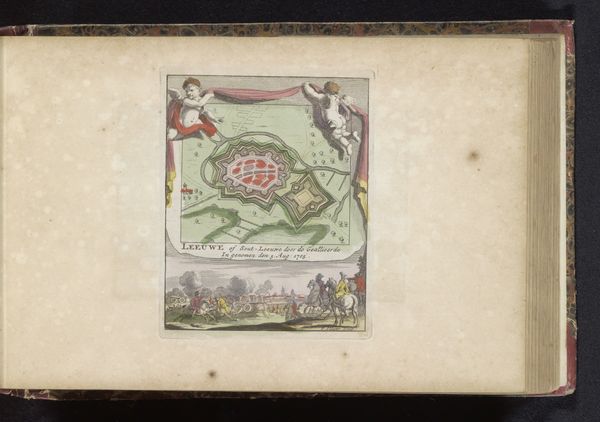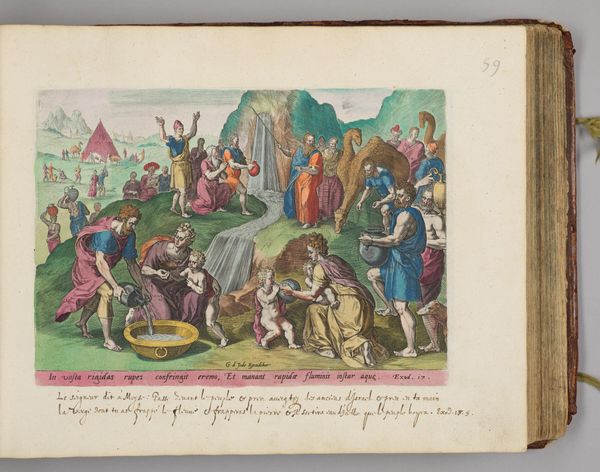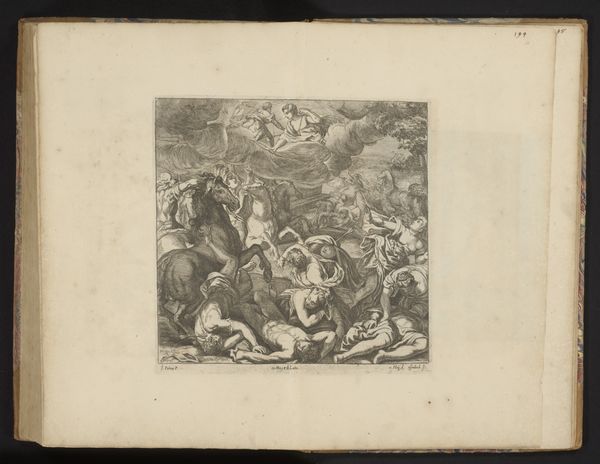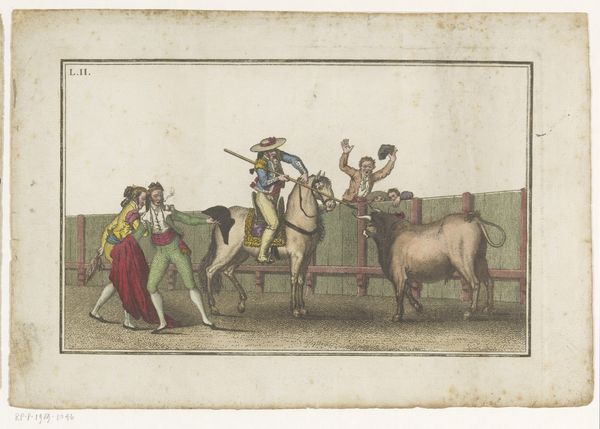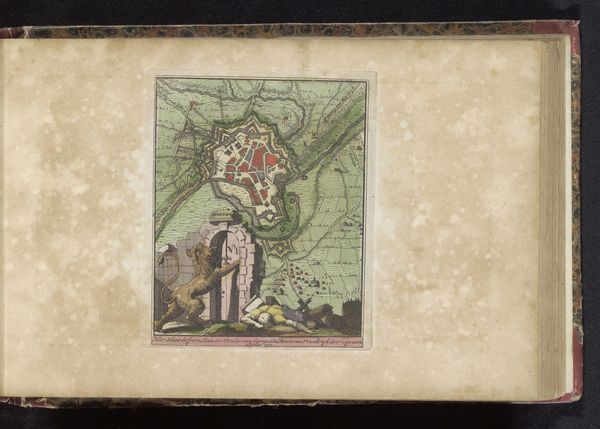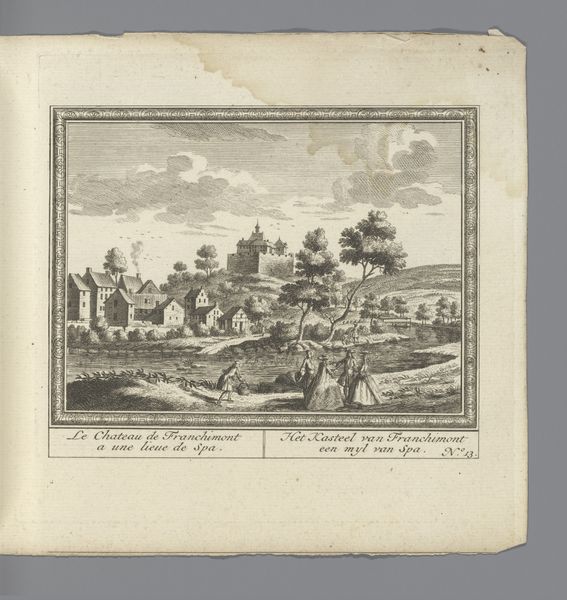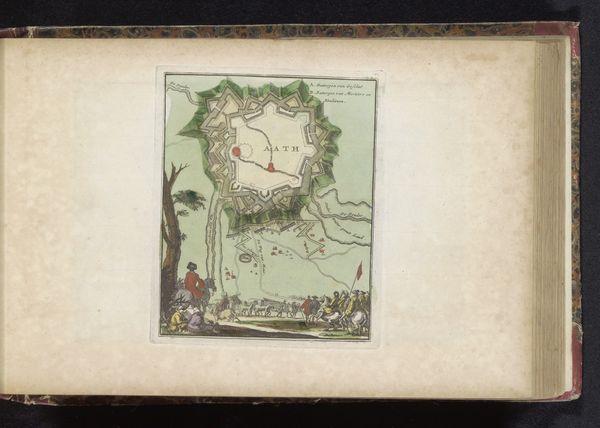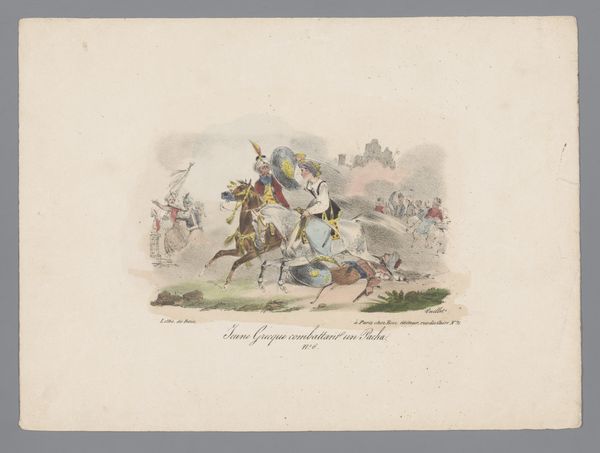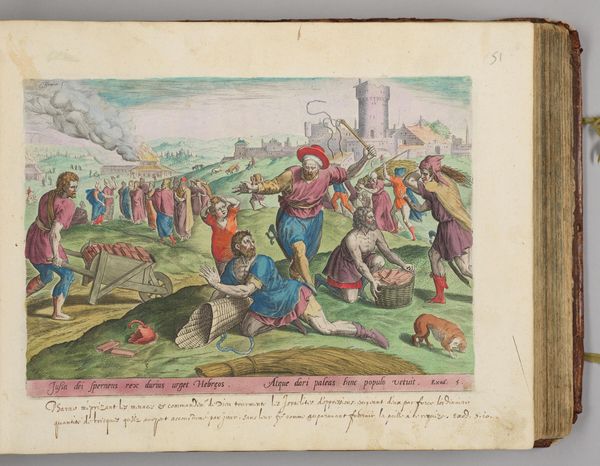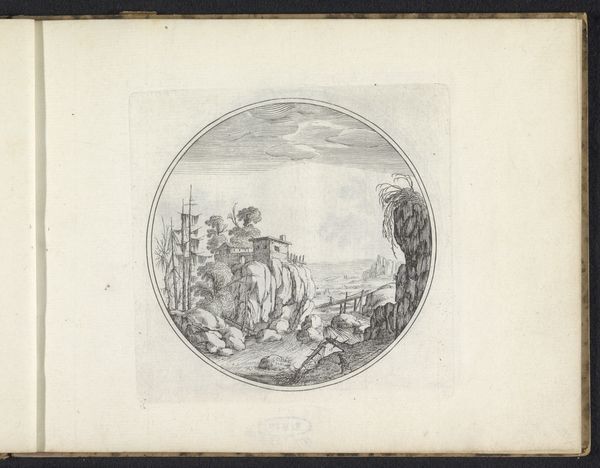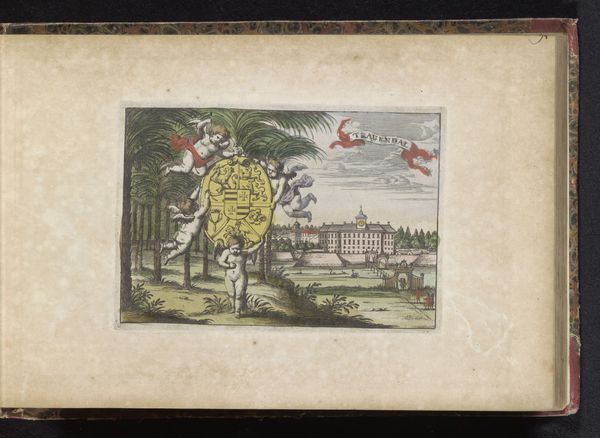
drawing, watercolor
#
drawing
#
water colours
#
baroque
#
watercolor
#
coloured pencil
#
cityscape
Dimensions: height 162 mm, width 120 mm
Copyright: Rijks Museum: Open Domain
Curator: This watercolor drawing from 1735 is entitled "Strijd rond Tortosa," and is attributed to an anonymous artist. The work presents both a bird's-eye-view map of Tortosa alongside an illustrative battle scene. Editor: It has an unsettling calmness about it, don’t you think? The pastel palette almost romanticizes the idea of warfare, and the composition, split between map and event, feels strangely detached. Curator: Interesting take. I read the composition quite differently. Placing the map above the troops on the ground roots the conflict in geography and possession. The image emphasizes the strategic rationale of siege warfare, where claiming territory determines control. It transforms individual combat into a calculated endeavor. Editor: True, but look at how the figures are rendered, the almost decorative quality of their uniforms. It lacks any of the brutal realities of war. Perhaps it speaks to the glorification of military campaigns common among the Baroque elite? The war becoming more about political theatrics than existential conflicts for the population. Curator: It could be an intentional downplaying of war’s horrors, designed to highlight a sense of orderly European expansion or governance, which often glossed over the suffering inherent in any conflict. Notice the symbols – the way the city Tortosa is pink, the hills green and how the battles are displayed. Editor: Right. And those three figures in the foreground—are they commanders assessing the battle or merely spectators? They could be construed as the voice of Baroque political machinery viewing a war theater unfold. The symbolic use of watercolours emphasizes transience—suggesting that the grip on land, territory, or glory are subject to weather. Curator: A fascinating reading! The use of coloured pencil also helps to create the visual clarity often valued in both maps and propaganda, creating both detailed accounts while not drawing attention to darker areas. Perhaps the real struggle in "Strijd rond Tortosa" is between objective mapping and subjective experience. Editor: The ambiguity, I think, invites us to ponder how societies selectively record, represent and therefore remember conflicts. It's far from neutral reportage. Curator: Indeed, it presents us with another layer to peel back concerning cultural narratives in artwork from this period. Thank you. Editor: Likewise. Always more to discover.
Comments
No comments
Be the first to comment and join the conversation on the ultimate creative platform.
